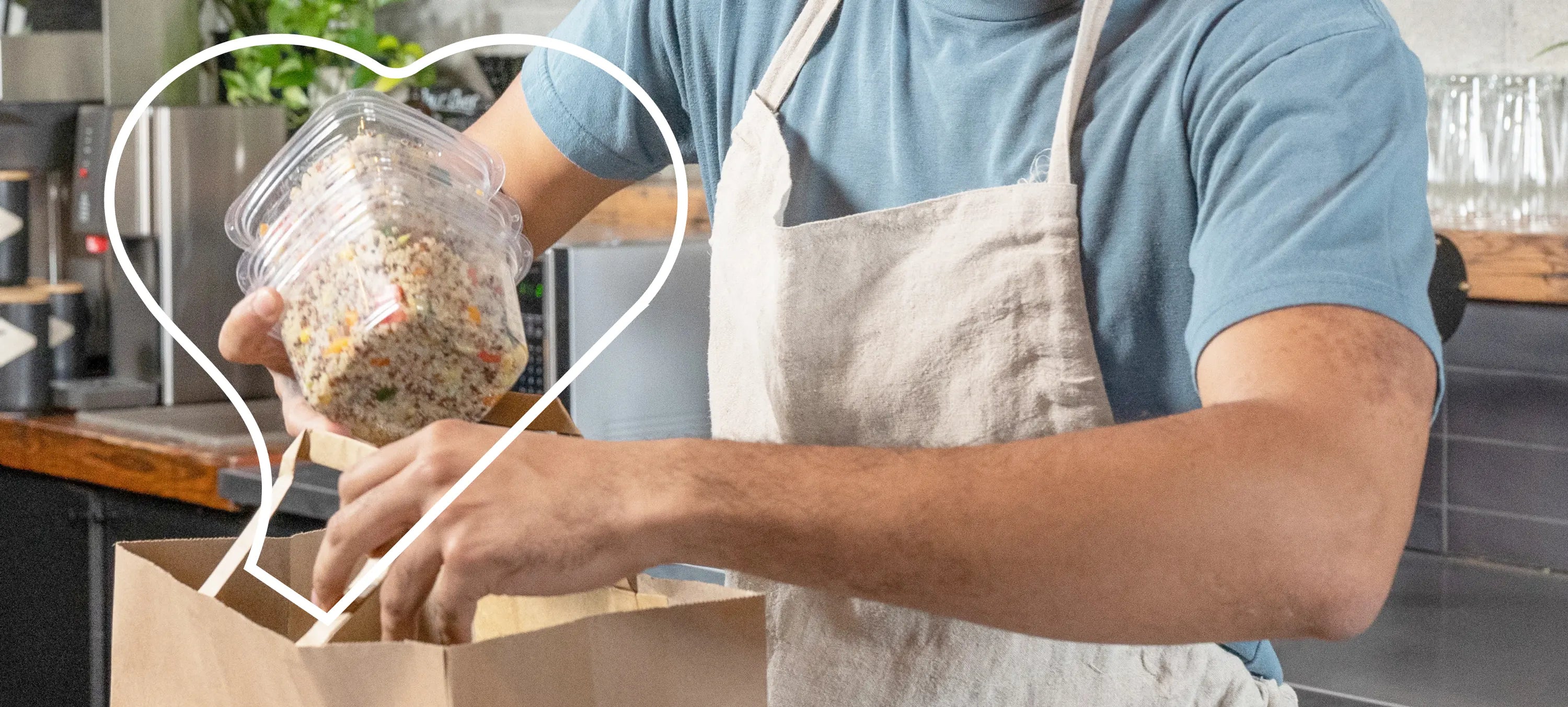

Our reliance on prepared foods and ready-to-eat meals, whether that’s due to eating habits influenced by the pandemic, our increasingly time-starved lifestyles, or an increase of food options, is at an all-time high and driving up packaging waste.
Convenience Eating

“Convenience eating has always been a trend but what’s changed is how people are consuming takeout meals. What was once grabbing a pizza and bringing it home, has turned into salad bars and grab-and-go lunches from the grocery store, takeout and quick service meal spots.”
- Paul Antoniadis, CEO

of respondents said that they are consistently buying or increasing their consumption of ready-to-eat meals, meal kits, and takeout food and delivery since the start of the year.

Despite persistent inflation, cash-strapped consumers are choosing ready-to-eat meals over groceries: Nearly 1 in 4 respondents said that shopping for ready-to-eat meals was less expensive than buying groceries.

respondents said that they decreased their weekly purchases of prepared foods, as well as takeout and food delivery in the last 6 months.
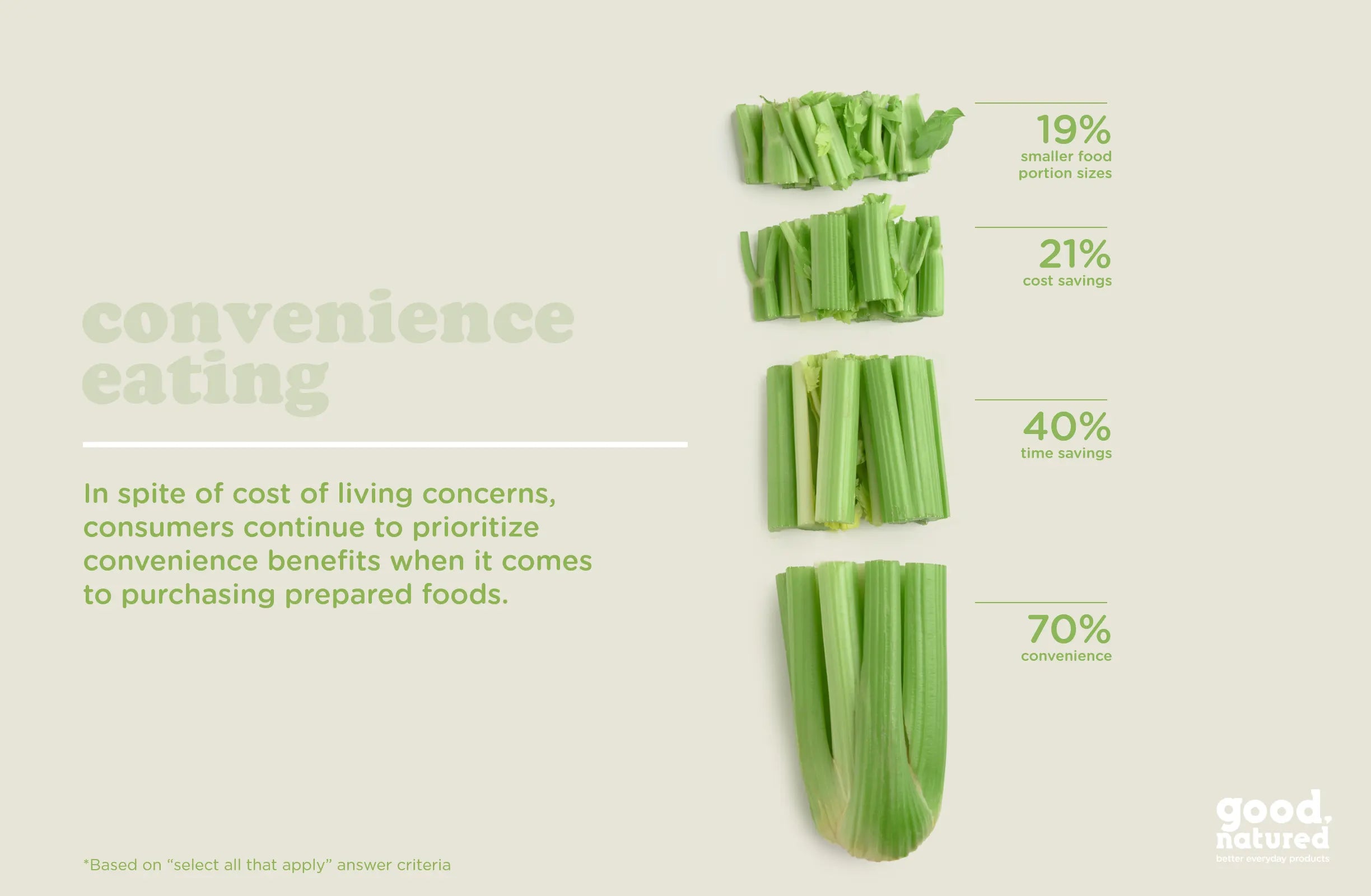
Meal Planning
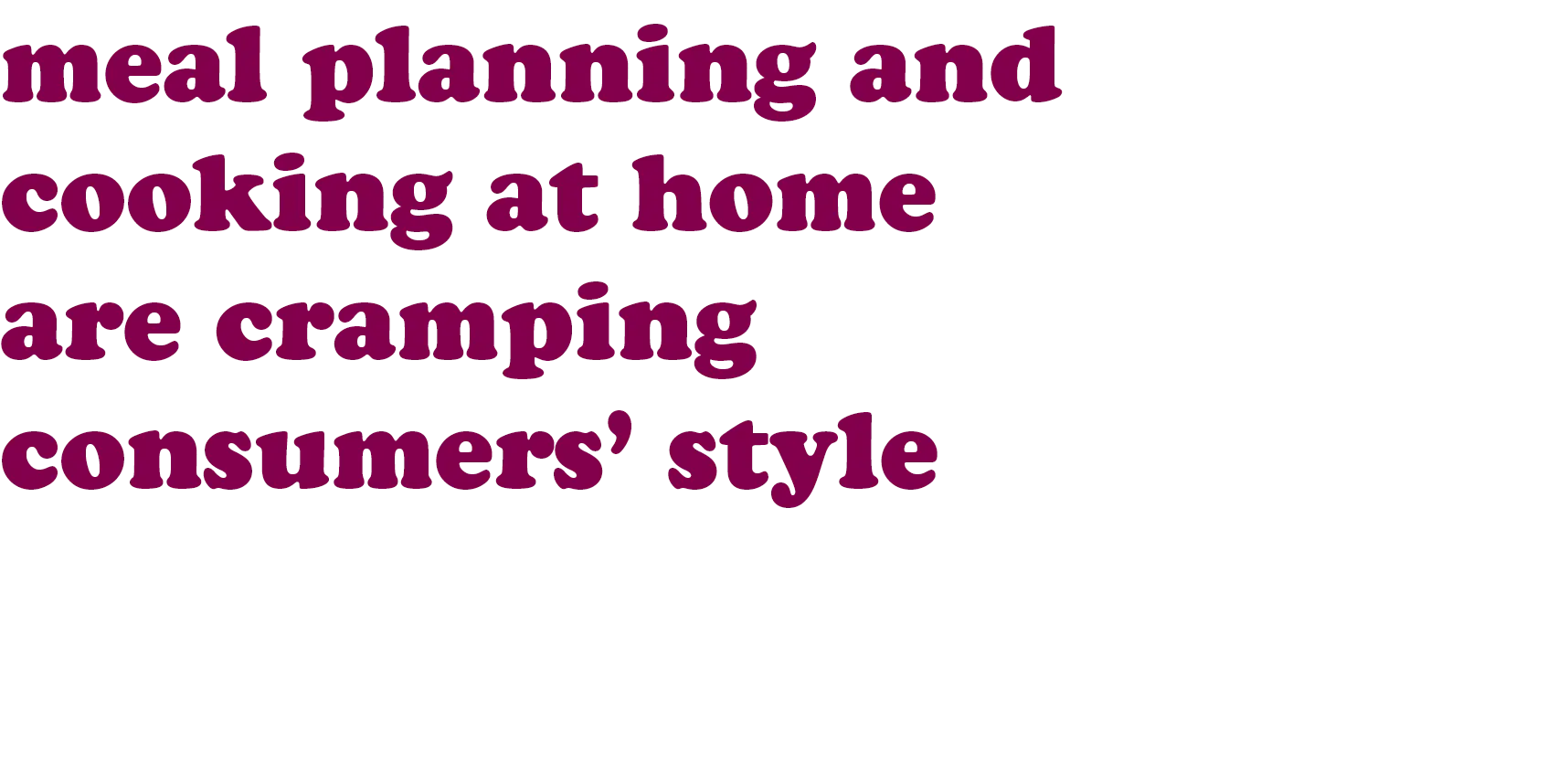

of respondents said buying convenience foods allows them to spend more time with family or do something fun.

said that they are prioritizing work, sleep, and household chores with any free time that they have.
Cooking and meal prep are taking time away from people being able to spend quality time with family and friends or participate in leisure activities.
The two most common reasons consumers are buying hot and cold ready-to-eat meals at a grocery store are meals for one (56%) and to supplement their home cooked meals with additional side dishes (56%).
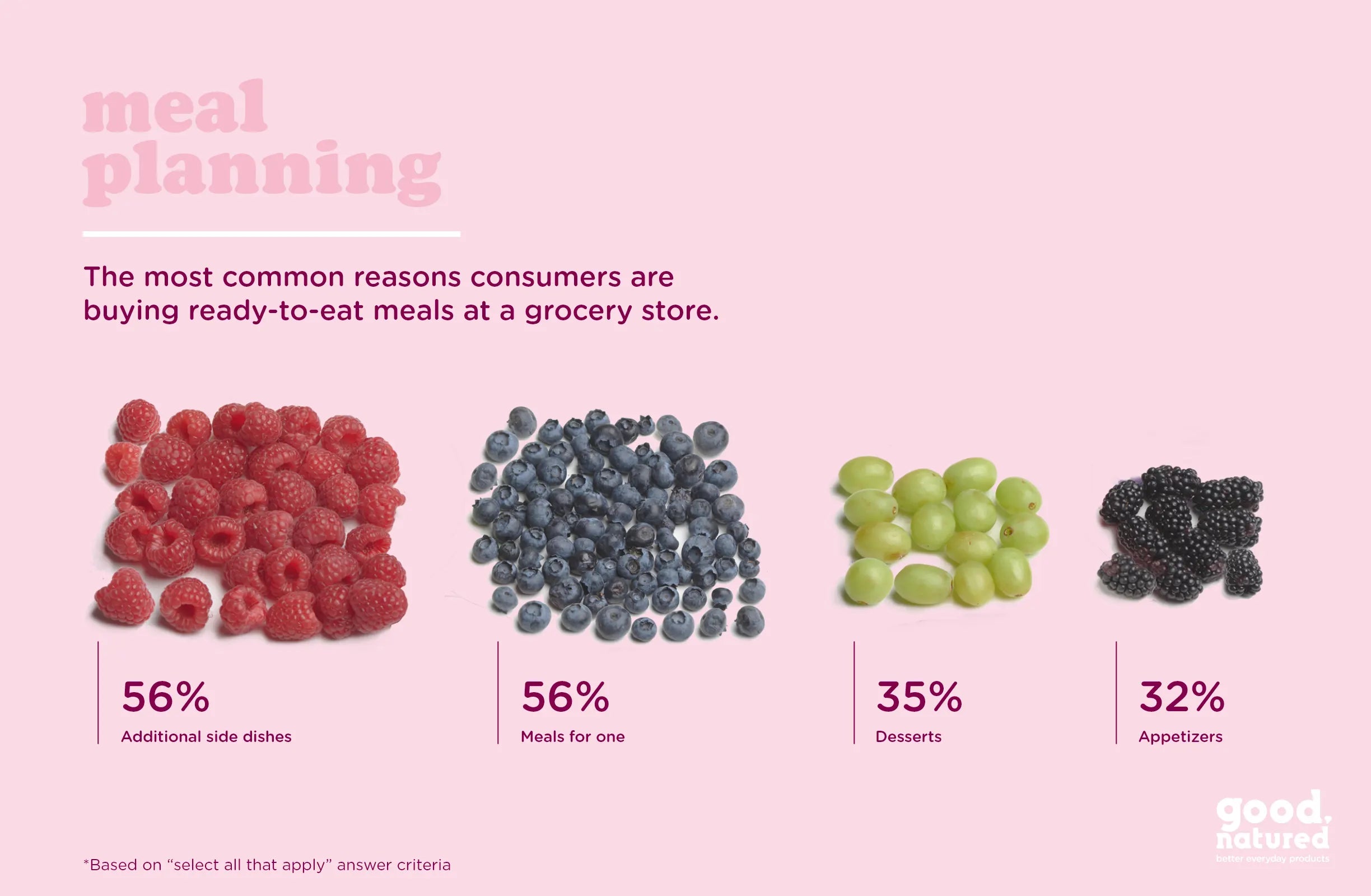
Food Packaging
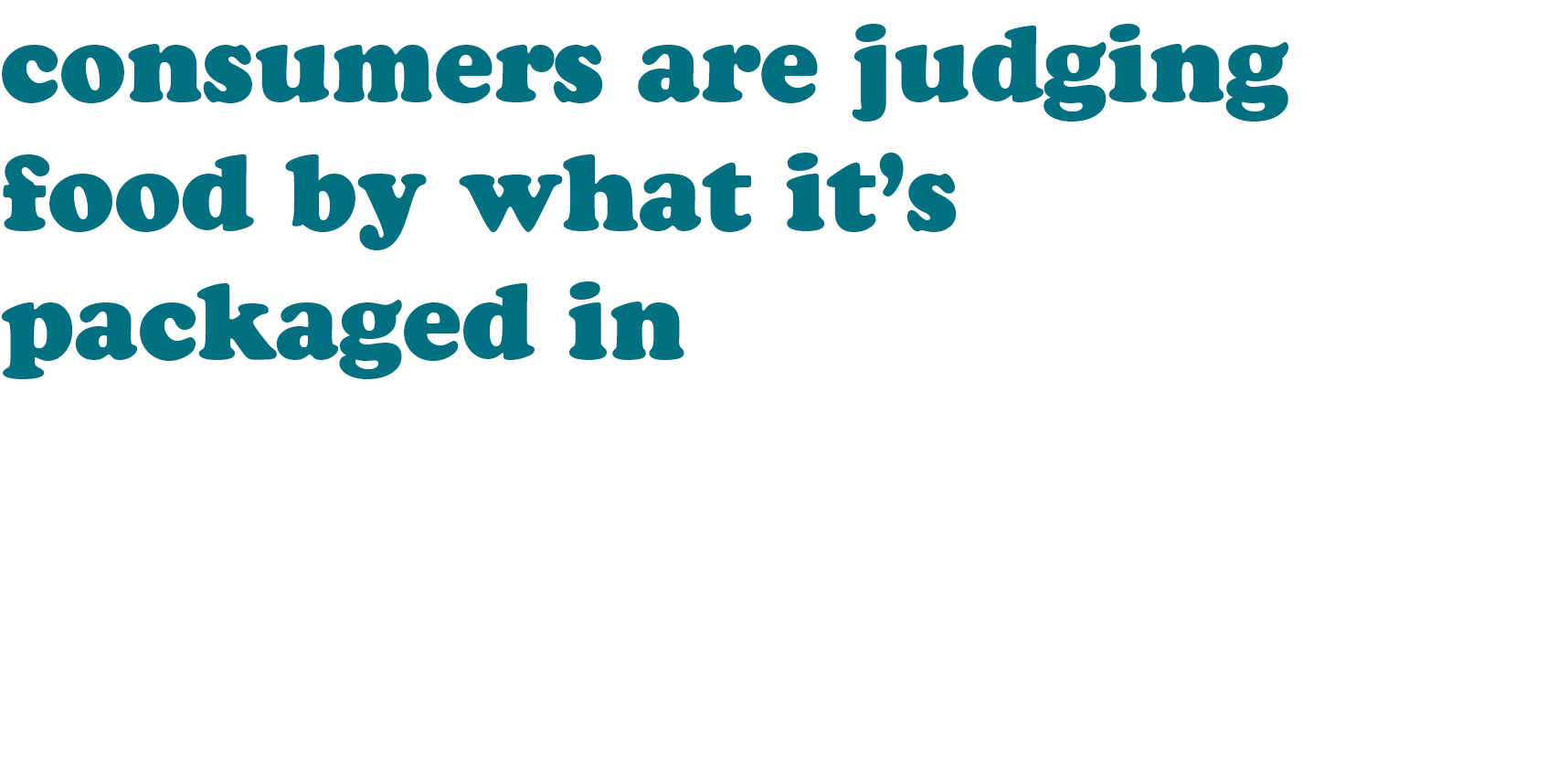
“The key factors consumers keep in mind when shopping for food are visibility and freshness. These factors are illustrated in our various product innovations. Our goal is to make it easy for businesses to choose good natured® packaging and not have to think twice about food safety, quality or freshness when choosing eco-friendly packaging options.”
- Paul Antoniadis, CEO

of respondents are worried about their food being tampered with, followed by the temperature of their food and chemicals of concern in food packaging like BPAs and phthalates leaching into their food.

of consumers cited “food freshness” as the most important factor when buying food at the grocery store, restaurant, convenience store, or when getting food delivered.

of respondents want high clarity food packaging and would be likely to buy the product if they can see what it looks like first.

Sustainable Packaging
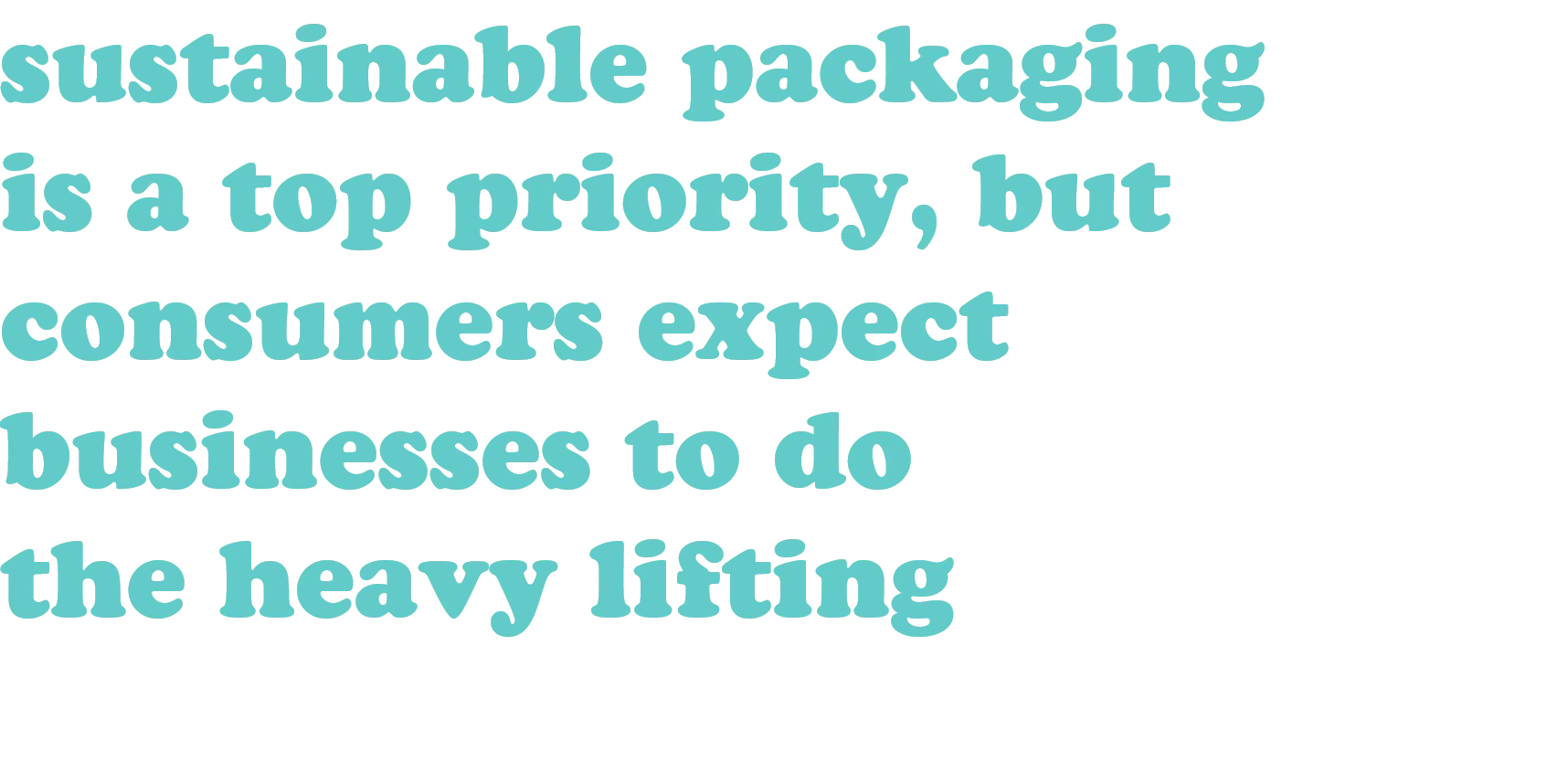

of respondents feel that it is a business’s responsibility to provide eco-friendly food packaging to help reduce the effects of climate change.

say that eco-friendly food packaging is important to them and that they usually look at a product’s packaging when shopping.
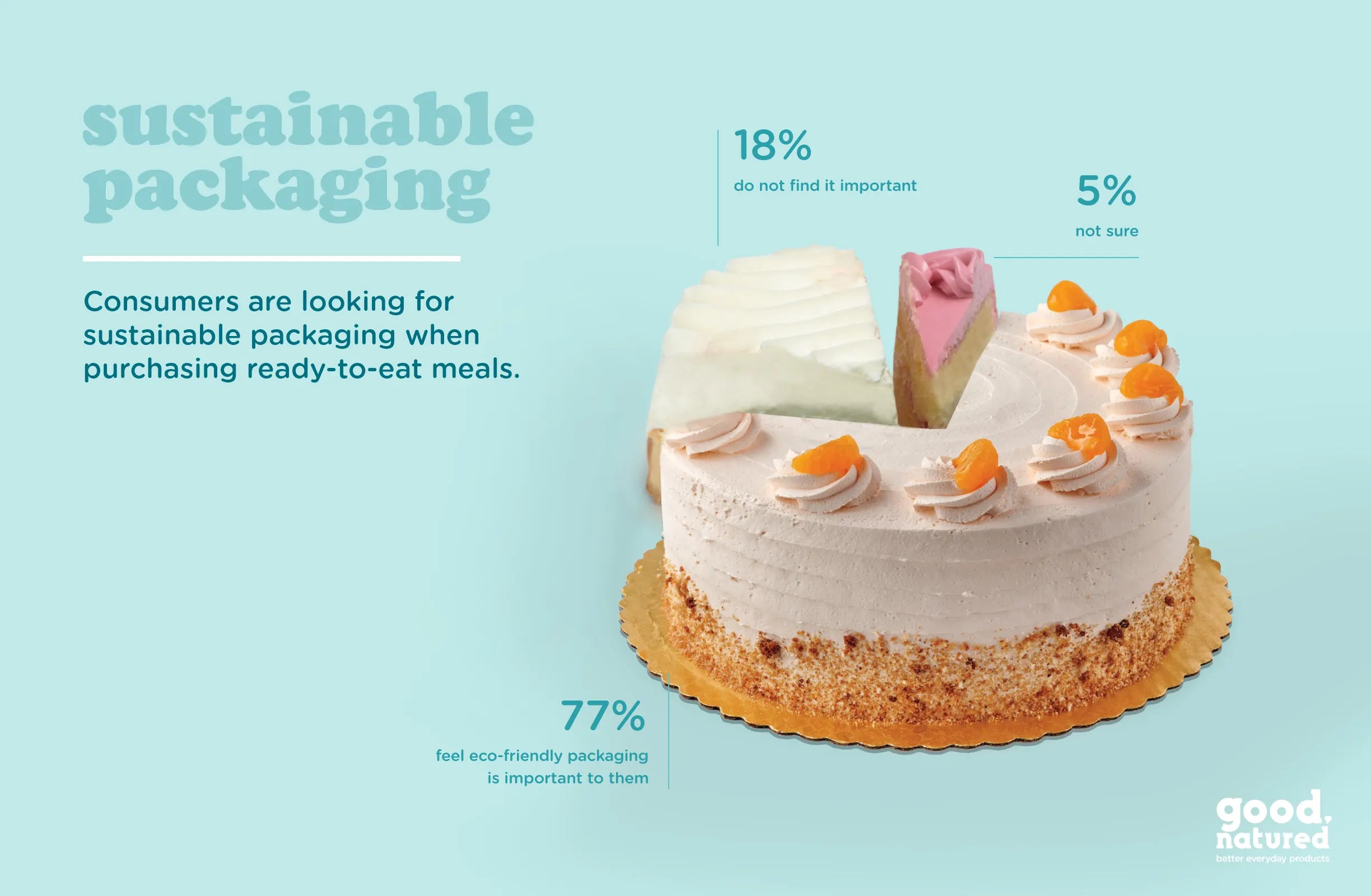
Circular Economy


respondents have good intentions to dispose of or recycle their food packaging, but don’t know the proper procedures to do so.

typically wash their food containers thoroughly before disposing of them.

are influenced by social media to become more eco-friendly, meaning the impact of more
wide-spread conversation and education is palpable.
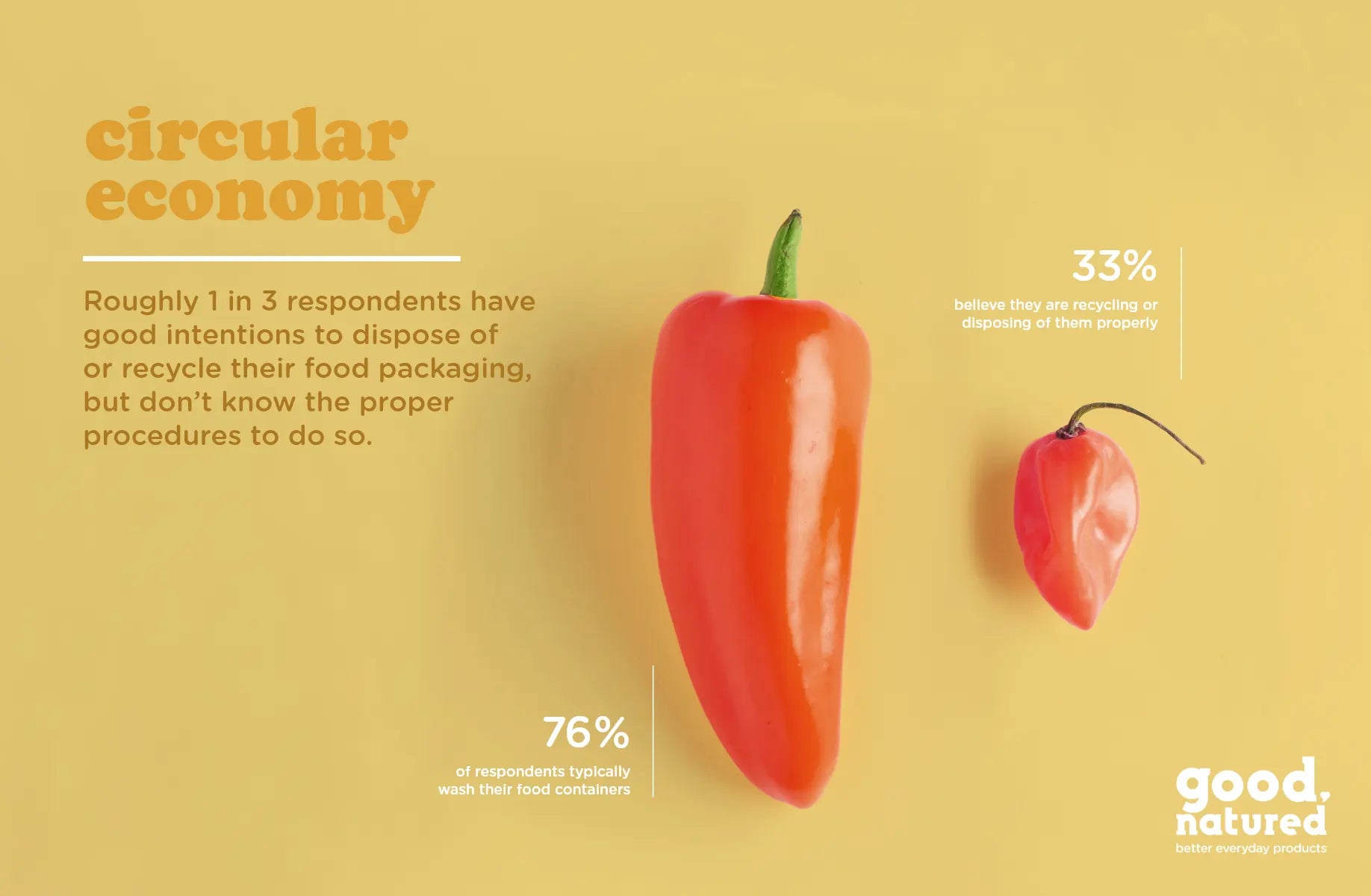
Our Packaging
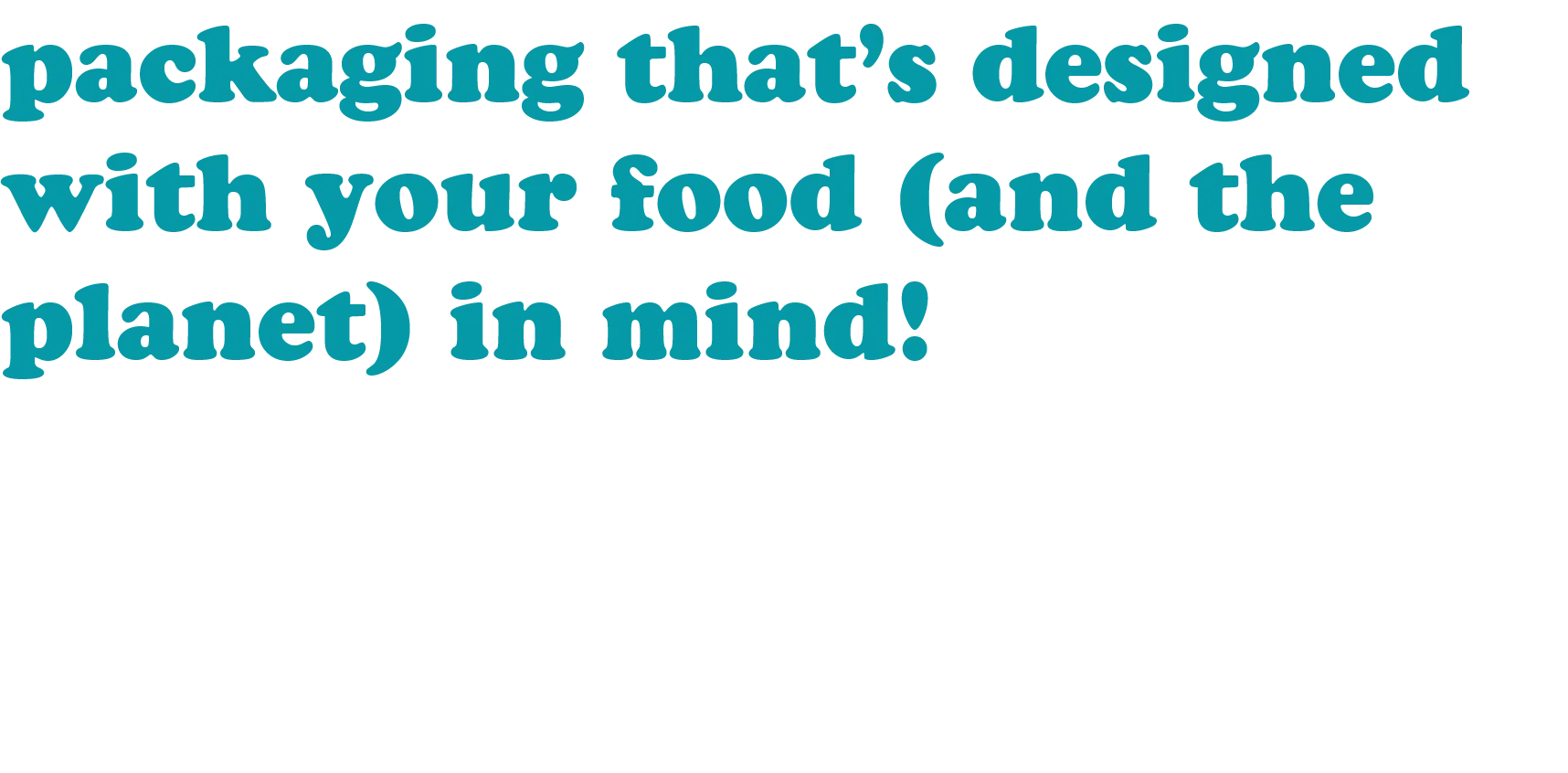

eco-friendly food containers designed to amp up product visibility and keep your food fresh, safe and protected.

plant-based materials and no chemicals of concern (so you don’t have to worry about nasty stuff leaching into your food).

plant-based material options that are better for the planet; commercially compostable* and curbside recyclable.
* Commercially compostable only where such facilities exist.
